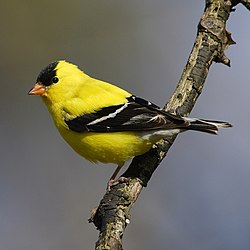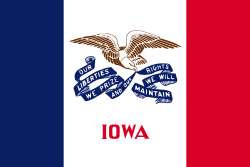
The state of Iowa has adopted numerous symbols through the state legislature. These symbols are listed in the Iowa Official Register. [1]

The state of Iowa has adopted numerous symbols through the state legislature. These symbols are listed in the Iowa Official Register. [1]
| Type | Symbol | Notes | Adopted | Image |
|---|---|---|---|---|
| Bird | American Goldfinch | Spinus tristis (synonym: Carduelis tristis) | 1933 |  |
| Flag | Flag of Iowa | Specified in Iowa Code - Title I Chapter IB [2] | 1921 |  |
| Flower | Wild Rose | No one species is established by the legislature, but the wild prairie rose (Rosa arkansana — synonym: Rosa pratincola) is most often used. | 1897 |  |
| Rock | Geode | 1967 |  | |
| Seal | Seal of Iowa | Includes the state motto: "Our liberties we prize, and our rights we will maintain.", specified in Iowa Code - Title I Chapter IA [3] | 1847 |  |
| Song | "The Song of Iowa" | by S. H. M. Byers | ||
| Tree | Oak | No species or variety designated | 1961 |  |